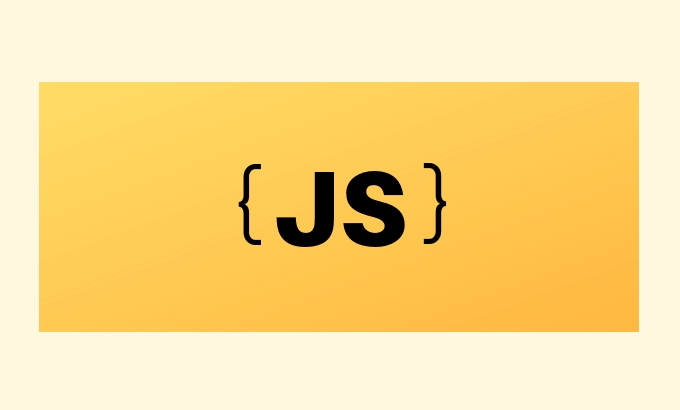To use WebRTC to establish real-time audio and video or data transmission between browsers, first create an RTCPeerConnection and configure the STUN server; 1. Create a connection instance and process ICE candidates to traverse NAT and firewalls; 2. Generate and exchange offers and answers to negotiate connections; 3. Add local media streams and receive remote streams through ontrack; 4. Listen to state changes and clean up resources correctly to avoid memory leaks. Handling asynchronous operations and necessary steps in sequence ensures successful connections.

WebRTC lets you connect browsers directly so users can share audio, video, or data in real time — no server needed for the actual media transfer. If you're trying to set up peer-to-peer communication using JavaScript and WebRTC, you're probably looking to build something like a video chat, screen sharing tool, or multiplayer game with low latency.

Here's how to get it working without getting stuck on common pitfalls.
Setting Up the Basic Connection
The first thing you need is an RTCPeerConnection instance. This is your main object for managing the connection between two peers.

const configuration = { iceServers: [{ urls: 'stun:stun.l.google.com:19302' }] };
const peerConnection = new RTCPeerConnection(configuration);This code creates a basic connection with a STUN server, which helps peers find each other through NATs or firewalls. Without this, direct connections often fail in real-world networks.
You'll also want to handle ICE candidates — these are potential network paths between the two users. You exchange them through your own signaling channel (like WebSocket or Firebase):

peerConnection.onicecandidate = event => {
if (event.candidate) {
// Send candidate to remote peer via your signaling method
}
};Once both sides have exchanged ICE candidates, the connection should start forming automatically.
Generating and Exchange Offers and Answers
To start a call, one side creates an offer:
const offer = await peerConnection.createOffer(); await peerConnection.setLocalDescription(offer); // Send offer to the other peer
The receiving peer takes that offer and responds with an answer:
await peerConnection.setRemoteDescription(offer); const answer = await peerConnection.createAnswer(); await peerConnection.setLocalDescription(answer); // Send answer back to the original peer
Both sides must set the remote description (the offer or answer they received), and then the ICE process kicks in to negotiate the best way to connect.
A few things to watch:
- Make sure you wait for
setLocalDescriptionbefore sending the offer or answer. - Don't skip handling ICE candidates — missing even one can cause the connection to fail.
Adding Media Streams
If you're building a video chat, you'll need to capture local media and send it over:
const stream = await navigator.mediaDevices.getUserMedia({ video: true, audio: true });
stream.getTracks().forEach(track => peerConnection.addTrack(track, stream));On the receiving end:
peerConnection.ontrack = event => {
const remoteVideo = document.getElementById('remote-video');
remoteVideo.srcObject = event.streams[0];
}; This handles adding incoming video/audio to a DOM element. Note that ontrack fires once per track (so possible twice if both audio and video are sent).
One thing people often miss: make sure you're listening for ontrack before setting the remote description, otherwise you might miss the event.
Handling Disconnections and Cleanup
Connections don't last forever. Browsers may renegotiate, users close tabs, or networks drop. You should handle these events gracefully:
peerConnection.oniceconnectionstatechange = () => {
if (peerConnection.iceConnectionState === 'disconnected') {
console.log('Connection dropped');
// Handle reconnect or clean up
}
};Also, when ending a call or navigating away, always close the connection:
peerConnection.close();
And remove any references to streams or tracks to avoid memory leaks.
Setting up WebRTC doesn't have to be complicated, but there are enough moving parts that small mistakes — like not waiting for async calls or forgetting to add tracks — can break everything silently. Stick to the flow: create connection → generate offer/answer → exchange SDP and ICE candidates → add media → handle state changes.
Basically that's it.
The above is the detailed content of Implementing JavaScript WebRTC for Peer-to-Peer Communication. For more information, please follow other related articles on the PHP Chinese website!

Hot AI Tools

Undress AI Tool
Undress images for free

Undresser.AI Undress
AI-powered app for creating realistic nude photos

AI Clothes Remover
Online AI tool for removing clothes from photos.

Clothoff.io
AI clothes remover

Video Face Swap
Swap faces in any video effortlessly with our completely free AI face swap tool!

Hot Article

Hot Tools

Notepad++7.3.1
Easy-to-use and free code editor

SublimeText3 Chinese version
Chinese version, very easy to use

Zend Studio 13.0.1
Powerful PHP integrated development environment

Dreamweaver CS6
Visual web development tools

SublimeText3 Mac version
God-level code editing software (SublimeText3)
 How to make an HTTP request in Node.js?
Jul 13, 2025 am 02:18 AM
How to make an HTTP request in Node.js?
Jul 13, 2025 am 02:18 AM
There are three common ways to initiate HTTP requests in Node.js: use built-in modules, axios, and node-fetch. 1. Use the built-in http/https module without dependencies, which is suitable for basic scenarios, but requires manual processing of data stitching and error monitoring, such as using https.get() to obtain data or send POST requests through .write(); 2.axios is a third-party library based on Promise. It has concise syntax and powerful functions, supports async/await, automatic JSON conversion, interceptor, etc. It is recommended to simplify asynchronous request operations; 3.node-fetch provides a style similar to browser fetch, based on Promise and simple syntax
 JavaScript Data Types: Primitive vs Reference
Jul 13, 2025 am 02:43 AM
JavaScript Data Types: Primitive vs Reference
Jul 13, 2025 am 02:43 AM
JavaScript data types are divided into primitive types and reference types. Primitive types include string, number, boolean, null, undefined, and symbol. The values are immutable and copies are copied when assigning values, so they do not affect each other; reference types such as objects, arrays and functions store memory addresses, and variables pointing to the same object will affect each other. Typeof and instanceof can be used to determine types, but pay attention to the historical issues of typeofnull. Understanding these two types of differences can help write more stable and reliable code.
 JavaScript time object, someone builds an eactexe, faster website on Google Chrome, etc.
Jul 08, 2025 pm 02:27 PM
JavaScript time object, someone builds an eactexe, faster website on Google Chrome, etc.
Jul 08, 2025 pm 02:27 PM
Hello, JavaScript developers! Welcome to this week's JavaScript news! This week we will focus on: Oracle's trademark dispute with Deno, new JavaScript time objects are supported by browsers, Google Chrome updates, and some powerful developer tools. Let's get started! Oracle's trademark dispute with Deno Oracle's attempt to register a "JavaScript" trademark has caused controversy. Ryan Dahl, the creator of Node.js and Deno, has filed a petition to cancel the trademark, and he believes that JavaScript is an open standard and should not be used by Oracle
 Handling Promises: Chaining, Error Handling, and Promise Combinators in JavaScript
Jul 08, 2025 am 02:40 AM
Handling Promises: Chaining, Error Handling, and Promise Combinators in JavaScript
Jul 08, 2025 am 02:40 AM
Promise is the core mechanism for handling asynchronous operations in JavaScript. Understanding chain calls, error handling and combiners is the key to mastering their applications. 1. The chain call returns a new Promise through .then() to realize asynchronous process concatenation. Each .then() receives the previous result and can return a value or a Promise; 2. Error handling should use .catch() to catch exceptions to avoid silent failures, and can return the default value in catch to continue the process; 3. Combinators such as Promise.all() (successfully successful only after all success), Promise.race() (the first completion is returned) and Promise.allSettled() (waiting for all completions)
 What is the cache API and how is it used with Service Workers?
Jul 08, 2025 am 02:43 AM
What is the cache API and how is it used with Service Workers?
Jul 08, 2025 am 02:43 AM
CacheAPI is a tool provided by the browser to cache network requests, which is often used in conjunction with ServiceWorker to improve website performance and offline experience. 1. It allows developers to manually store resources such as scripts, style sheets, pictures, etc.; 2. It can match cache responses according to requests; 3. It supports deleting specific caches or clearing the entire cache; 4. It can implement cache priority or network priority strategies through ServiceWorker listening to fetch events; 5. It is often used for offline support, speed up repeated access speed, preloading key resources and background update content; 6. When using it, you need to pay attention to cache version control, storage restrictions and the difference from HTTP caching mechanism.
 JS roundup: a deep dive into the JavaScript event loop
Jul 08, 2025 am 02:24 AM
JS roundup: a deep dive into the JavaScript event loop
Jul 08, 2025 am 02:24 AM
JavaScript's event loop manages asynchronous operations by coordinating call stacks, WebAPIs, and task queues. 1. The call stack executes synchronous code, and when encountering asynchronous tasks, it is handed over to WebAPI for processing; 2. After the WebAPI completes the task in the background, it puts the callback into the corresponding queue (macro task or micro task); 3. The event loop checks whether the call stack is empty. If it is empty, the callback is taken out from the queue and pushed into the call stack for execution; 4. Micro tasks (such as Promise.then) take precedence over macro tasks (such as setTimeout); 5. Understanding the event loop helps to avoid blocking the main thread and optimize the code execution order.
 Understanding Event Bubbling and Capturing in JavaScript DOM events
Jul 08, 2025 am 02:36 AM
Understanding Event Bubbling and Capturing in JavaScript DOM events
Jul 08, 2025 am 02:36 AM
Event bubbles propagate from the target element outward to the ancestor node, while event capture propagates from the outer layer inward to the target element. 1. Event bubbles: After clicking the child element, the event triggers the listener of the parent element upwards in turn. For example, after clicking the button, it outputs Childclicked first, and then Parentclicked. 2. Event capture: Set the third parameter to true, so that the listener is executed in the capture stage, such as triggering the capture listener of the parent element before clicking the button. 3. Practical uses include unified management of child element events, interception preprocessing and performance optimization. 4. The DOM event stream is divided into three stages: capture, target and bubble, and the default listener is executed in the bubble stage.
 A JS roundup of higher-order functions beyond map and filter
Jul 10, 2025 am 11:41 AM
A JS roundup of higher-order functions beyond map and filter
Jul 10, 2025 am 11:41 AM
In JavaScript arrays, in addition to map and filter, there are other powerful and infrequently used methods. 1. Reduce can not only sum, but also count, group, flatten arrays, and build new structures; 2. Find and findIndex are used to find individual elements or indexes; 3.some and everything are used to determine whether conditions exist or all meet; 4.sort can be sorted but will change the original array; 5. Pay attention to copying the array when using it to avoid side effects. These methods make the code more concise and efficient.






